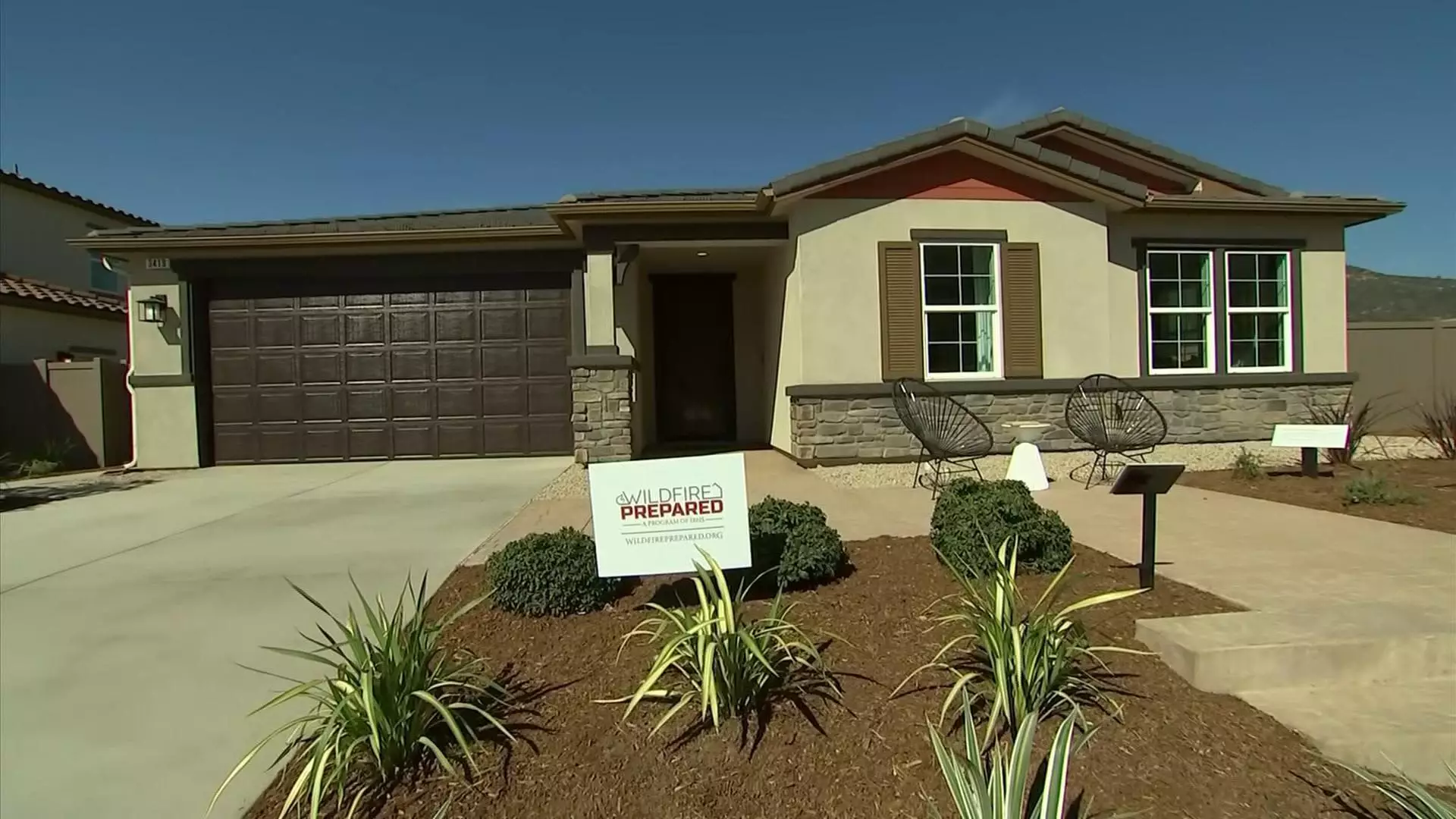As the effects of climate change become increasingly undeniable, particularly in wildfire-prone regions of California, the housing market is being compelled to adapt. The recently unveiled community of 64 fire-resilient homes by KB Home in Escondido represents a critical juncture in our approach to sustainable living in hazardous environments. This notion of resilience is not just a trendy tagline; it embodies a necessary response to the growing frequency of devastating wildfires that have already wreaked havoc on countless communities. This intersection of innovation and necessity provokes a broader discussion on how we can redesign our homes and neighborhoods to better withstand the elements.
Designing for Survival
The design elements of these homes, crafted to withstand fire hazards, are both radical and necessary. By embedding fire-resistant materials and altering the very architecture of these structures, KB Home is setting a precedent for the way forward in housing design. Features like stucco siding, tempered glass windows, and strategic landscaping all serve a dual purpose: they protect residents from potential wildfires while also raising the bar for safety standards across the industry. It is an unfortunate reality that traditional building methods often leave homes vulnerable to fire; thus, these new designs represent a paradigm shift in thinking.
Moreover, the competitive pricing of these homes—although still reaching the million-dollar mark—suggests that safety is a luxury increasingly accessible to the populace. This is a welcome advancement in a housing market that typically prioritizes profit margins over functional resilience. By focusing on fire-resilient homes specifically designed for first-time buyers, KB Home demonstrates that safety can coexist with affordability, albeit at a still significantly high threshold.
The Collaboration Between Developers and Communities
The swift adaptations by KB Home, as demonstrated by their collaborative efforts with local government to modify architectural plans, highlight a commendable model for how developers ought to interact with municipalities. This is an example of public-private collaboration done right—leveraging the insights and requisites from the city to construct a community that not only meets immediate safety concerns but also enriches the overall quality of life for residents.
However, the question remains: will such partnerships hold merit in the long term? As climate crises intensify, will other builders follow suit, or will the reluctance to innovate due to financial constraints limit growth in this vital area of construction? It is imperative that both the public and private sectors continuously prioritize safety improvements over speculative investments, particularly in areas that have historically been susceptible to disasters.
Insurance Implications in Today’s Climate
Far beyond the mere physicality of these homes, there lies an underlying imperative to rethink our insurance structures as well. As insurance companies steadily withdraw from high-risk regions, often leaving homeowners to fend for themselves, KB Home’s initiative comes as not just a proactive measure for residents but also as a potential lifeline for the struggling omnipresent insurance market. By prioritizing homes that fulfill new fire-resistance criteria, the company increases the likelihood that future homeowners will secure coverage, thereby stabilizing community wealth.
However, it’s crucial to maintain a level of skepticism. Implementing fire-resilient standards does not eliminate risk; every fire-resilient home is simply a fortification against formidable challenges, not an impenetrable fortress. The reality remains that until higher standards are universally adopted, much work remains to be done in radically shifting the perception of community safety in fire-prone areas.
While KB Home’s wildfire-resilient community opens a pathway to safer living in the face of nature’s fury, it’s essential to recognize this as just one of many steps needed in addressing a larger, systemic crisis. The intricate dance between safety, economy, and sustainability must continue evolving. In the wake of unprecedented climate disasters, it is not merely a matter of building homes; it is about reconstructing the very frameworks of our communities and our values. If society can secure safer, more resilient households today, perhaps it can pave the path toward a sustainable future tomorrow.

